This week’s #wordmadeart prompt is to make some pages of your Bible smaller.
It’s lifted straight out of one of Keri Smith’s book, Wreck This Journal. I thought the idea of pages of the Bible becoming bigger or smaller seemed particularly evocative. One reason: it’s the way we read scripture, right? Some pages, like the first page of John or the eighth chapter of Romans are gigantic in our mental maps of the Bible. And others, like the 13th chapter of Deuteronomy or all of Malachi are comparatively tiny.
So: if I were going to make pages of the Bible shrink, which would I choose?
I immediately thought of Judges. Judges 19, specifically, about the Levite’s concubine. It’s an ugly, ugly story.
I was moved by Rachel Held Evan’s brief section of her book A Year of Biblical Womanhood that deals with Judges 19. Her friend makes a diorama, and they light candles to remember the Biblical women “exploited, neglected, ravaged, and crushed at the hand of patriarchy.” including the Levite’s concubine. It meant a lot to me that Evans’ book didn’t gloss over these stories, that it tried to see them redemptively.
I was also helped a lot about these texts in the Bible by reading Phyllis Tribble’s Texts of Terror: Literary-Feminist Readings of Biblical Narratives. It places these terrible texts alongside texts of Jesus, who was pierced for our transgressions.
I flinch less when reading Judges 19 now.
But I still wish it would disappear. I know, I know, “All the people did what was right in their own eyes.” It’s not exactly sanctioned. But there are other problematic parts of the Bible about women that are more sanctioned. It’s the whole kit-and-caboodle. It’s problematic.
So I ripped it out.
Then I ripped it into (twelve) shreds.
Twelve is a nice, juicy number, isn’t it? According to Biblestudy.org, “The meaning of 12, which is considered a perfect number, is that it symbolizes God’s power and authority..It can also symbolize completeness or the nation of Israel as a whole.”
Women are part of the wholeness of Israel, the church, the world, aren’t they? Would not God’s power and authority mean justice for women?
I twisted each strip a bit, and then used watercolors to paint them. I painted them the color of bruises. Then I braided them into four strands.
I painted over the whole paige of Judges 20-21, except for a few verses that I used a white crayon to keep the paint from covering. There were two of these: “But the Israelites had compassion for Benjamin their kin…” Benjamin was the tribe responsible for the horror. Israel apparently had more compassion for the abusers than for the abused. This is, maddeningly, still an attitude that’s alive and well today.
And this one: “When the young women of Shiloh came out to dance in the dances, then come out of the vineyards and each of you carry off a wife for himself from the young women of Shiloh…” This is the rest of Israel’s solution to the decimation of the tribe of Benjamin: rape and enslave even more women.
Then I braided all of the cords together into one fat cord, and pasted it to the page:
It kinda looks like a caterpillar. Or my idea of a joint (I have very little firsthand experience.)
As I braided, I thought about the fleet fingers of women. Women have always taken what’s on hand, whether it’s straw or rags or paper, and used it to make beautiful things for use. Bowls, hats, baskets, textiles. Braiding is such a useful art. It creates strength out of trash.
I would like to see all the Bible redeemed in that way. The things I would rather throw away, I hope God can tuck into the fabric into my life. I would love to read everything without fear, to see under and over and through the stories that hurt right now. I want to see God’s hands braiding together ugliness and transforming it. I don’t want to simply ignore these stories. I don’t want to pretend they’re better then they are. But I do long to be able to read them with strength and dignity.
I’m grateful for this project, and for writers like Rachel Held Evans and Phyllis Tribble that are allowing me to look these stories in the eye, lay hands on them and pray, and braid them into my life as part of its fabric.
Okay, now it’s your turn. How did you make a page of the Bible smaller? Share your stories with us:
- On Twitter, add the hashtag #wordmadeart.
- On Facebook, post your pictures on my page.
- Or, email them to me at heather.caliri@gmail.com, and I’ll share them for you.
Want to join in? Get a guidebook here. It’s a hand-drawn book of inspiration for this encounter with scripture, with 52 projects that could keep you creative all year. It also includes links to project how-tos, ideas, and other helpful things to spark fun. Get your copy today!


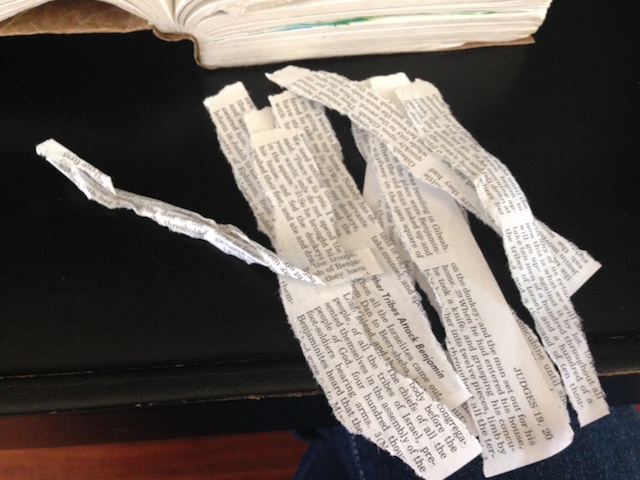
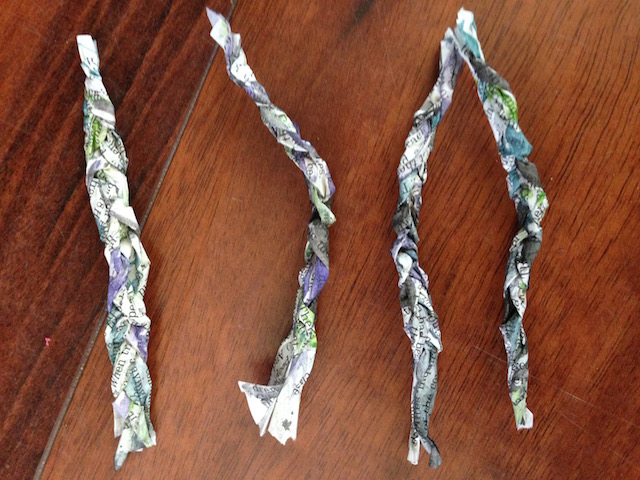
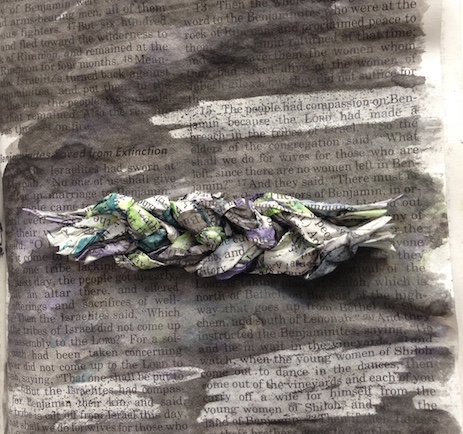
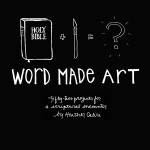
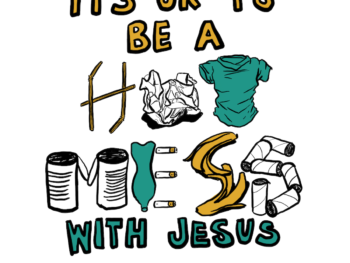


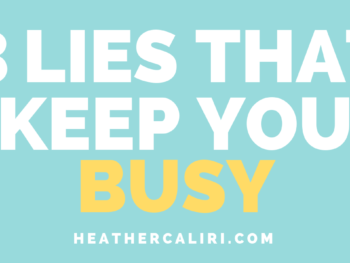

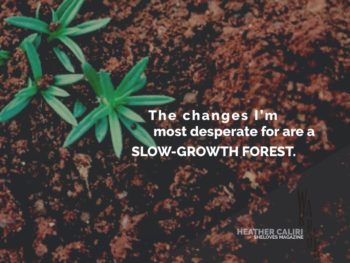





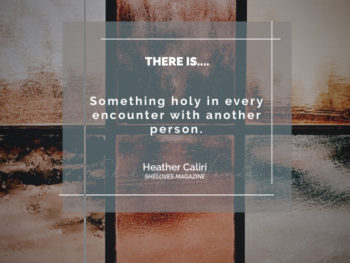
 When the Rain Does Not Come–for The Mudroom
When the Rain Does Not Come–for The Mudroom
I really enjoyed your description of this, even though I’m not doing my own art right now. Having just read RHE’s book, This was very meaningful to me.
Thanks, Margaret! I’m glad you found it meaningful!